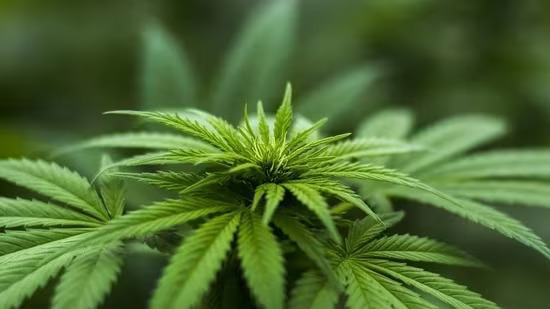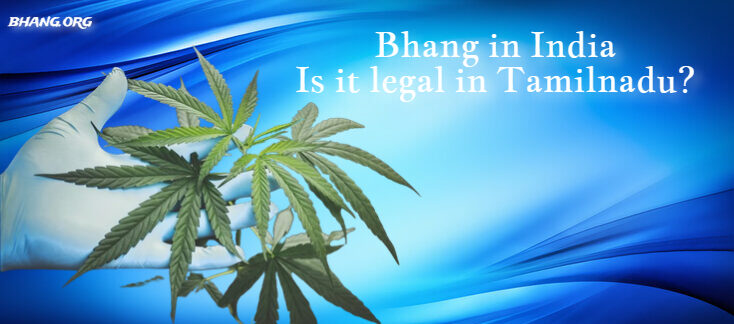
What is Bhang and How to Prepare It?
If you’re seeking an authentic cannabis experience, turn to the experts in India, where they’ve been using a traditional cannabis preparation called Bhang for over 2000 years.
Bhang is an edible product made from the leaves, stems, and flowers of the female cannabis sativa plant. It’s been prescribed in Ayurvedic medicine to alleviate various ailments like nausea, pain, insomnia, anxiety, and digestive issues. You can find it in Indian bhang shops, distributed during Hindu festivals, and it can be incorporated into cooking.
Understanding Bhang: Production and Usage
Bhang, a cannabis derivative, is produced by grinding and soaking cannabis leaves and stems to create a paste. The inclusion of cannabis flowers in the mixture enhances its potency.
In Indian culinary traditions, bhang is a common ingredient in various recipes, including:
- Bhang Lassi: A sweet, yogurt-based beverage infused with herbs, spices, and fruits.
- Bhang Thandai: Similar to lassi but made with almonds, ground nuts, and milk instead of yogurt.
- Bhang Goli: Herbal “balls” utilized in Ayurvedic medicine for treating digestive ailments.
- Bhang Water: Freshly ground cannabis mixed with water.
- Bhang Ki Chutney: A condiment resembling jam or relish from Uttarakhand, often served with meals.
- Bhang Sweets: Halva-like confections containing bhang cannabis.
Furthermore, Ayurvedic physicians may prescribe specific remedies containing bhang.
Despite cannabis being illegal in India, law enforcement generally shows leniency towards bhang due to its religious significance, particularly during festivals like Holi. As bhang is not classified as a narcotic drug under the 1985 NDPS Act, it remains legally permissible in India.
Understanding the Mechanism of Bhang
Bhang, containing beneficial cannabinoids like THC and CBD, interacts with various receptor systems in the body upon consumption.
Upon ingestion, cannabinoids in bhang bind to receptors within the endocannabinoid system (ECS), influencing functions such as memory, learning, immunity, and motor skills.
The ECS, present in humans and animals, is distributed throughout the body to receive naturally occurring cannabinoids like anandamide and 2-AG. This suggests a natural relationship between humans and cannabis, cultivated over thousands of years.
Consuming bhang initiates neurological changes, resulting in effects such as:
- Euphoria
- Enhanced sensory perception
- Physical and mental relaxation
- Reduced inhibition, often leading to increased laughter
An interesting aspect of bhang is its ability to induce these effects without undergoing heating (decarboxylation), unlike other cannabis products.
However, it’s essential to note that the effects of bhang may not always be entirely positive, particularly when consumed in excessive doses. Overindulgence in delicious cannabis-infused recipes can lead to adverse reactions.
Potential Risks and Side Effects of Bhang
Despite being made from unheated cannabis, bhang carries the risk of overconsumption, leading to various adverse effects:
- Psychological Discomfort: While many experience euphoria and positive feelings with cannabis use, some individuals may encounter negative psychological effects such as panic, fear, or depression.
- Impacts on Brain Function: Cannabis consumption, including bhang, can impair memory, coordination, and induce psychosis or paranoia, particularly when consumed in large quantities.
- Dosage Challenges: Consuming cannabis-infused products like bhang through ingestion can result in delayed onset of effects, making it easier to consume excessive amounts unintentionally. This can lead to uncomfortable side effects associated with high THC doses, including increased heart rate, fatigue, low blood sugar, and mental confusion or disorientation.
Potential Benefits of Bhang
Despite its potential risks, bhang offers several potential benefits, providing relief for various physical ailments and health conditions:
Pain Relief:
Many individuals turn to cannabis, including bhang, for pain relief. Bhang is particularly desirable due to its often less intense effects compared to other cannabis edibles. While cannabis is widely believed to offer physical pain relief, further studies are needed to better understand its efficacy in this area.
Reduction of Muscle Spasms and Seizures:
Cannabis products like bhang have shown promise in reducing muscle spasms and seizures, particularly in conditions such as multiple sclerosis (MS) and epilepsy. Studies indicate that CBD, a component of cannabis, may help reduce seizures, with a dosage of nine milligrams per kilogram of body weight demonstrating significant seizure reduction in individuals with epilepsy. Additionally, reviews have noted a decrease in muscle spasms among MS patients after taking cannabinoids compared to a placebo.
Management of Nausea and Vomiting:
Bhang and other cannabis products have long been recognized for their ability to alleviate symptoms of nausea, vomiting, and appetite loss. Research suggests that cannabis products may be more effective than conventional anti-nausea medications and placebos, particularly in individuals undergoing chemotherapy.
Conclusion:
Bhang offers a unique and enjoyable way to experience the benefits of cannabis. However, it’s essential to exercise caution, as cannabis edibles can be potent. When trying bhang or any new cannabis product, it’s advisable to start with a low dose and gradually increase until the desired effects are achieved. Additionally, be aware that cannabis edibles may have a delayed onset of action, sometimes taking up to two to three hours to take effect. Starting with a low dose and gradually increasing allows for a safe and enjoyable experience with bhang cannabis.
FAQs about Bhang
What is Bhang, and how is it made?
Bhang is a cannabis derivative made by grinding and soaking cannabis leaves, stems, and sometimes flowers to create a paste. It is commonly used in various Indian recipes, including beverages like Bhang Lassi and Thandai, herbal remedies like Bhang Goli, and condiments like Bhang Ki Chutney.
Is Bhang legal in India?
While cannabis is generally illegal in India, bhang is tolerated due to its cultural and religious significance, particularly during festivals like Holi. It is not classified as a narcotic drug under the 1985 NDPS Act, making it legally permissible in India.
How does Bhang affect the body?
Bhang contains cannabinoids like THC and CBD, which interact with the body’s endocannabinoid system (ECS) upon consumption. This interaction influences functions such as memory, learning, immunity, and motor skills, resulting in effects like euphoria, relaxation, and sensory enhancement.
What are the potential risks and side effects of consuming Bhang?
Despite its benefits, overconsumption of Bhang can lead to adverse effects such as psychological discomfort (panic, fear, or depression), impaired brain function (memory loss, coordination issues), and challenges with dosage control (due to delayed onset of effects).
What are the potential benefits of Bhang?
Bhang offers relief for various physical ailments and health conditions, including pain relief, reduction of muscle spasms and seizures, and management of nausea and vomiting. However, further research is needed to fully understand its efficacy in these areas.


